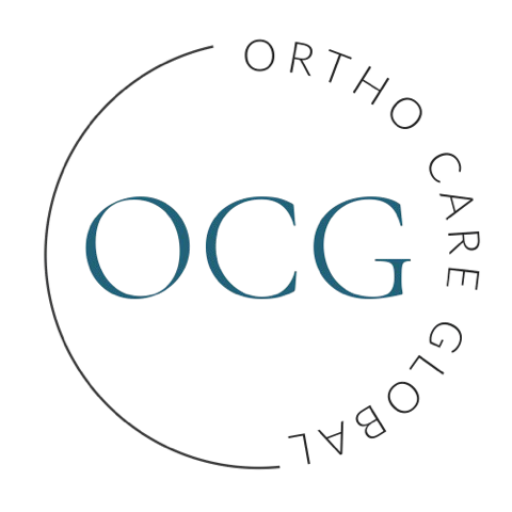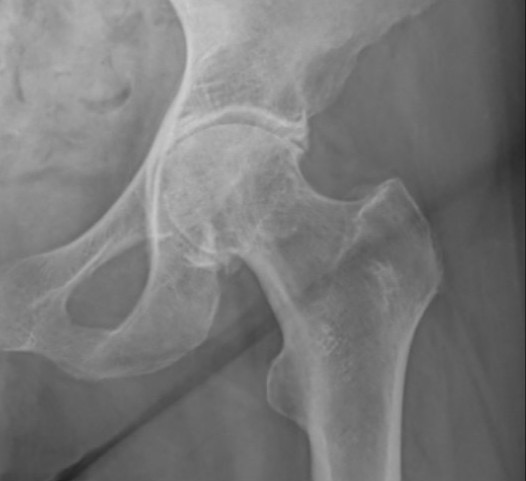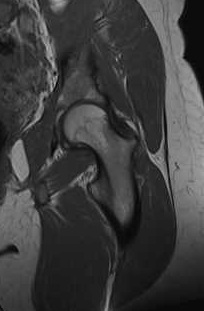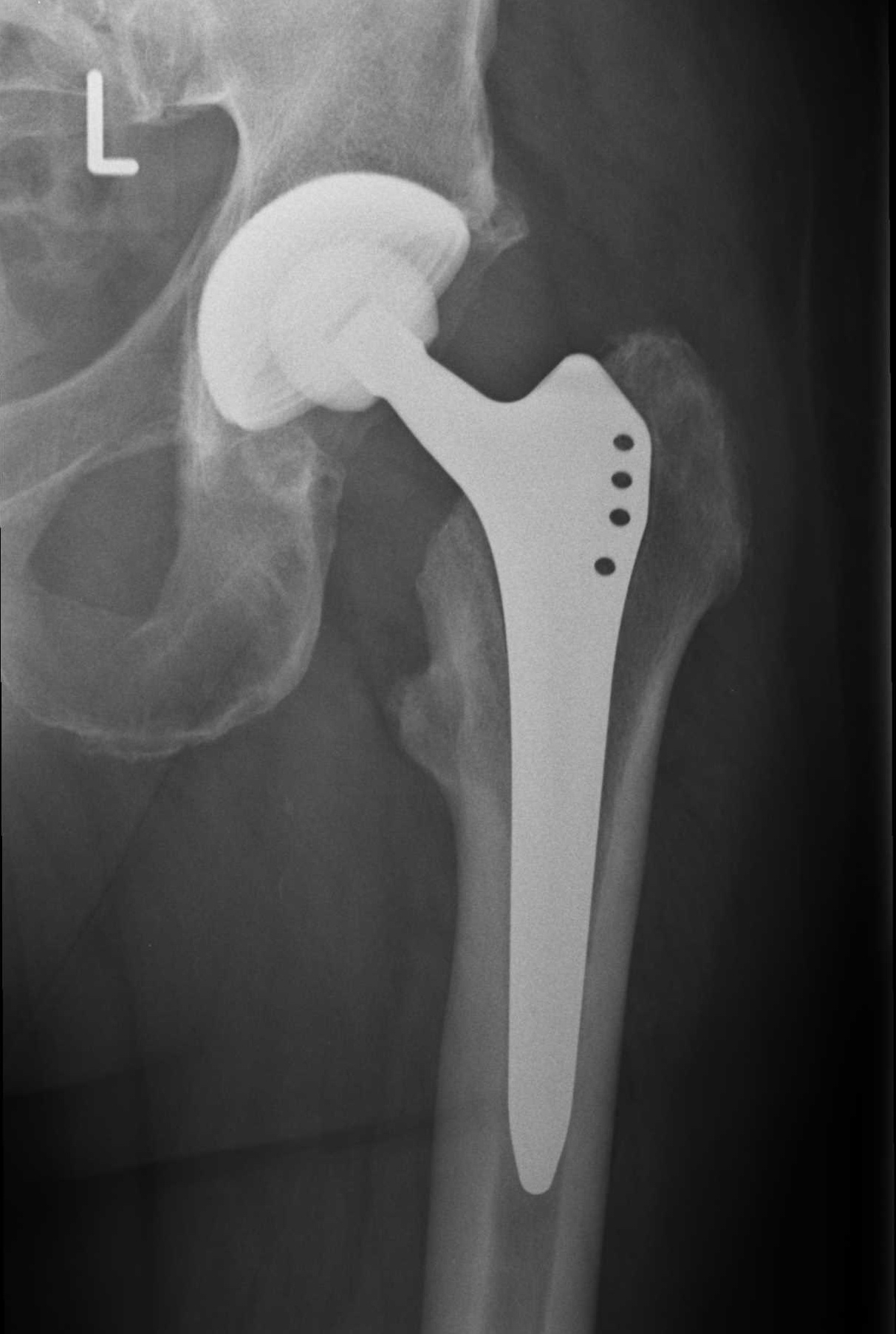Symptoms, diseases and medical Treatment
Hip
Diseases of the hip joint are predominantly caused by primary osteoarthritis. The development of this disease is essentially due to genetic factors, although physical stress and constitution can also play a role (e.g. obesity and lack of exercise). As a consequence, the cartilage that provides normal joint function is increasingly destroyed, resulting in a painful restriction of movement. In addition to the causes that lead to primary osteoarthritis, there are also secondary causes that can promote the development of osteoarthritis. Early childhood maturation disorders (dysplasia) or inflammation play a role. However, other diseases of childhood and adolescence can also lead to secondary osteoarthritis of the joint as a pre-arthritic deformity.
Conservative treatment consists of prescribing medication and physiotherapy, but can at best delay the consequences of wear and tear. Surgical treatment is the only sensible option.
Medical solutions
Endoscopic surgery
Hip arthroscopy has become increasingly important in the treatment of hip joint disorders in recent years. It is an elegant method of favorably influencing early forms of wear and tear. However, it should not be forgotten that hip arthroscopy is subject to a differentiated range of indications and that only an experienced surgeon should perform this procedure due to the potential risk of complications. The indication must be determined on an individual basis; successful surgery can prevent the progression of hip joint destruction much better than conservative treatment.
Miniinvasive total replacement
In addition to the total replacement of the destroyed hip joint with a cemented or non-cemented total prosthesis, miniinvasive total replacement has increasingly become the focus of attention in recent years. A fundamental distinction must be made here as to whether it is a mini-invasive implantation technique that is gentle on the joint and soft tissue or whether the use of so-called mini-prostheses is being propagated.
Depending on the patient’s initial requirements, we always perform the mini-invasive, gentle approach as standard.
We use so-called mini-prostheses very selectively according to our experience and the results of international studies, as it is currently unclear whether these prostheses offer a long-term advantage over standard restorations.
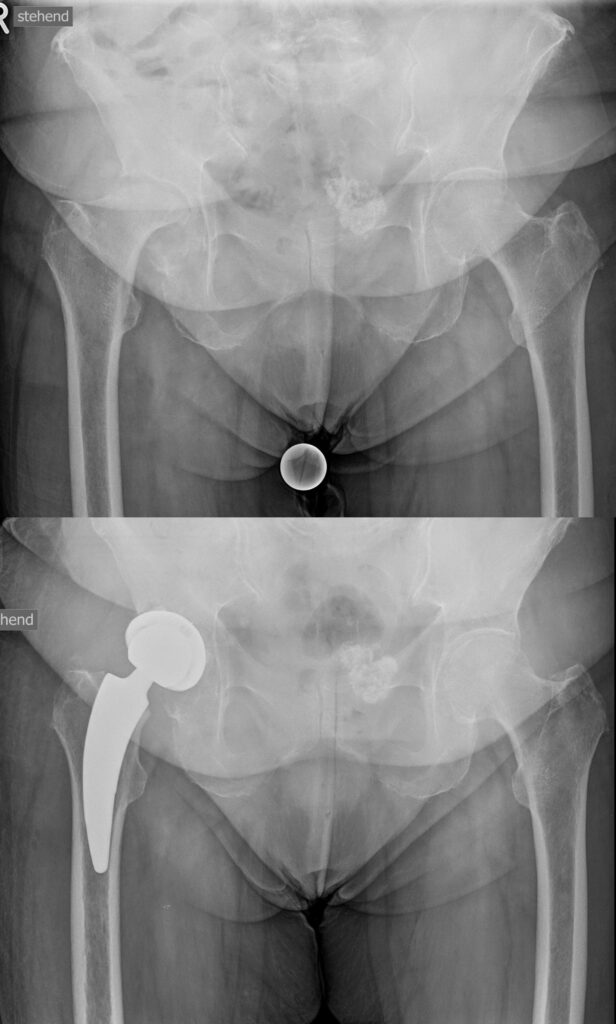
Total hip replacement
The standard replacement of the hip joint with cementless or cemented hip prostheses, which has been performed in Europe for more than 40 years, is considered to be safe, with cementless treatment being the preferred option. Based on the fact that all hip prosthesis models sold worldwide have their origin in Germany, Switzerland and Italy and their robustness has been proven by extensive studies, it can be assumed that, depending on the indication, safe treatment at the highest level is possible.
Revision surgery
Revision surgery is of particular importance nowadays. Clear rules are required to ensure that, if necessary, the reaction to so-called aseptic loosening of the artificial joint (normal implant wear) is different from that to septic loosening of an artificial hip joint. The planning of such interventions is always individualized and is based on the extensive experience of the results of the European arthroplasty register and the current scientific literature.
Start Your Medical Evaluation
Fill out our secure online form and get expert treatment recommendations from top European surgeons — no commitment required.
